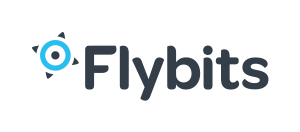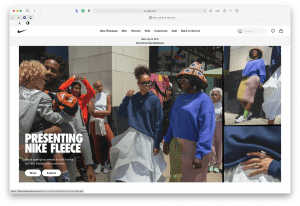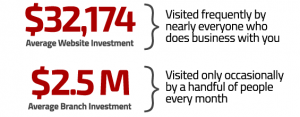
Generation Z (aka Gen Z, iGen, or centennials), refers to the generation that was born between 1997-2012, following millennials. This generation has been raised on the internet and social media, with some of the oldest finishing college and entering the workforce. This technology-driven generation will soon become the largest cohort of consumers—and credit unions who want a piece of this opportunity will need to understand their tendencies and digital expectations. Let’s explore how Generation Z finds, uses, and what they expect from your credit union’s website.
Generation Z searches long-tail keywords.
A long-tail keyword is a phrase that is generally made from three to six words. Since these keywords are more specific than generic terms, they allow you to target niche demographics, like Gen Z. As a side note, these keywords are less competitive than generic keywords because they are designed to better reflect how people make queries. An example of a long-tail keyword would be “credit union home loan rates” rather than trying to rank for the highly competitive keyword “mortgage.” Even if you aren’t interested in targeting Gen Z just yet, you should still optimize your website and content for long-tail search keywords. While Gen Z most commonly uses this search tactic, millennials aren’t far behind.
Taking this point further, with voice assistants like Siri, Alexa, and Google Assistant, Gen Z and millennials also regularly use voice assistants and smart devices. This means that when a person verbally asks questions or gives full commands to voice assistants, the AI algorithm will recognize the long-tail phrase and perform search queries for them (Bump, 2020).
At this point, long-tail is getting more and more common across the board. Optimizing your website to cater to Gen Z search queries will only help you gain traffic from all age groups as this search tactic becomes more common throughout age groups.
Generation Z includes “best,” “cheap,” or “how-to,” in search queries.
A Fractl study found that Gen Zers are most likely to begin searches with the word “best.” For example, when asking for results related to the “best restaurants in Boston.” While 30% to 32% Baby Boomers and Gen Xers used the term in searches during the experiment, 56% of Gen Z used it (Bump, 2020).
The commodity of “best” searches could suggest that Gen Z is more interested than other generations in using search platforms to get recommendations or suggestions for the best possible experience.
Other phrases that Gen Z searches more than other generations include “cheap” and “how to.” Being a member of the Gen Z generation myself, I can attest to this statistic. When conducting a Google search, they always start with a “best” or “how-to.”
Gen Z searches for video over other content types.
According to Think with Google, 85% of teenagers within Gen Z use YouTube to regularly find content; while 80% of Gen Z says YouTube videos have successfully taught them about something. Aside from using video for entertainment, both millennials and Gen Z prefer to watch videos for information gathering purposes. Even when it comes to learning about a new brand or product, these age groups prefer video explainers, product demos, or other marketing videos to simply reading about a company online (Bump, 2021).
This brings light to the statement I made in my first blog post when I said, a website should not be a digital brochure. It should have content that comes to life. While creating video content for a site can be time-consuming and costly, there are beneficial aspects. Having videos explaining the mortgage process, how to raise a credit score, or how to start a retirement fund will bolster your website views and traffic to all audiences, leading to new members and loans.
New generations will always present new opportunities for innovation in the ways they prefer content and the overall experience desired. As we can see from above, Generation Z is no stranger to this. I encourage all to further research aspects of Gen Z and how they work. It gives a fresh perspective on everything!
References:












